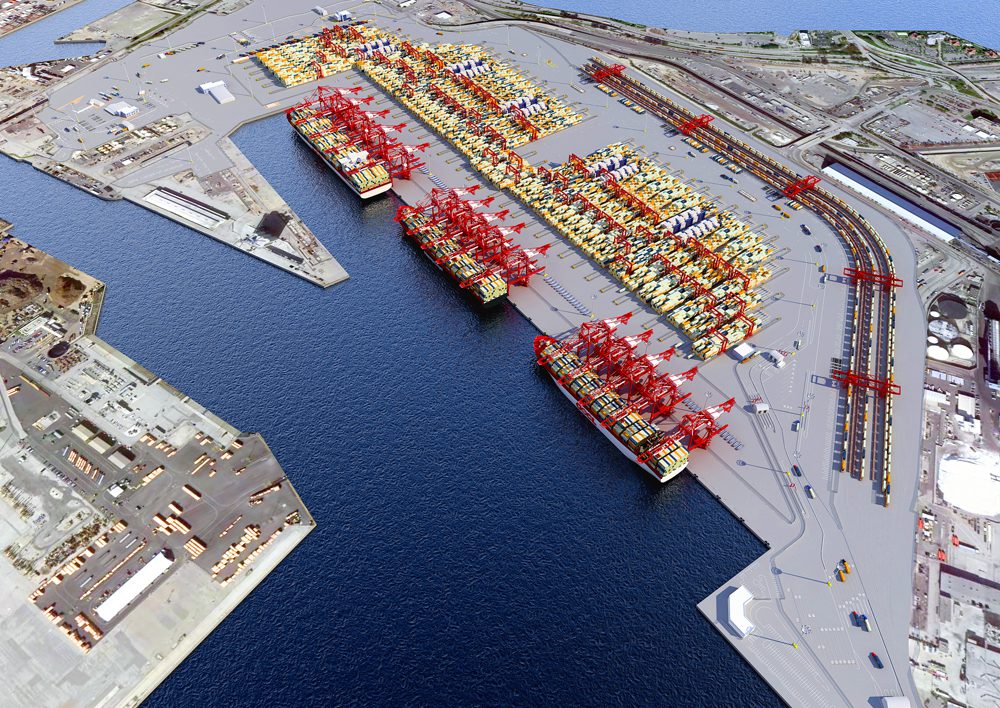The Port of Long Beach navigated a trade dispute with China, new technology and evolving trade routes in 2019, culminating in its second-busiest year on record by moving more than 7.6 million twenty-foot equivalent units, Executive Director Mario Cordero announced Wednesday at the annual State of the Port address.
Cordero was introduced by Long Beach Harbor Commission President Bonnie Lowenthal in front of an audience of more than 750 industry partners, community members and civic leaders gathered at the Long Beach Convention Center Grand Ballroom.
As a leader in environmental sustainability and community engagement, Lowenthal said the Port is poised to have a prosperous 2020 despite dramatic changes within the goods movement industry.
“Ours is the task of promoting trade so that this city, region, state and nation can thrive,” Lowenthal said. “It’s our responsibility to see that Port resources are used wisely to keep us competitive and a leader in goods movement.”
The Port wrapped up 2019, its second-busiest year on record, with 7,632,032 twenty-foot equivalent units (TEUs) moved, a decrease of 5.7% from the record-setting pace logged in 2018. Imports slid 8.3% to 3,758,438 TEUs. Exports totaled 1,472,802 TEUs, down 3.3%, while empties decreased 2.8% to 2,400,792 TEUs.
Terminal operators and dockworkers moved 665,261 TEUs in December, a 10.3% decline compared to December 2018. Imports were down 13.4% to 323,231 TEUs. Export TEUs jumped 10.6% to 125,395 units, while empties dropped 15.1% to 216,635 TEUs.
Looking ahead into 2020, Cordero sounded an optimistic note of “better times ahead” and progress on trade war discussions, while also pointing out the challenges of lagging business investment and continued uncertainty in the industry.
“At the end of the day, we need to be ready for whatever may come,” Cordero said in his speech. “We need to compete, we need to innovate, we need to lead. And most of all, we need to collaborate.”
The best way to do that, Cordero said, is to distinguish Long Beach as the Port of Choice by working toward operational excellence with labor, shipping companies, ocean carriers, truckers and other industry partners.
Key projects launched over the past decade are nearing completion, including the replacement for the aging Gerald Desmond Bridge. The new cable-stayed span is scheduled to open to traffic later this year.
Additionally, construction is scheduled to wrap up in 2021 on the final phase of the Long Beach Container Terminal, creating the greenest, most technologically advanced terminal in North America. Over the next decade, the Port also plans to invest an additional $1 billion in rail improvements that will speed the flow of goods across the country while reducing local road traffic.
Cordero on Wednesday also unveiled a new logo for the Port, aimed at conveying a message of operational excellence, and a commitment to partnership with industry and the community.
And coming soon, the Port will launch a completely redesigned website, making it easier for businesses and the community to interact with the Port and find essential information. The new polb.com will be mobile-friendly and easy to navigate and search, featuring stunning imagery and new interactive features.
The Port of Long Beach’s 2019 TEU totals are available at this link. December 2019 detailed statistics are here.

























